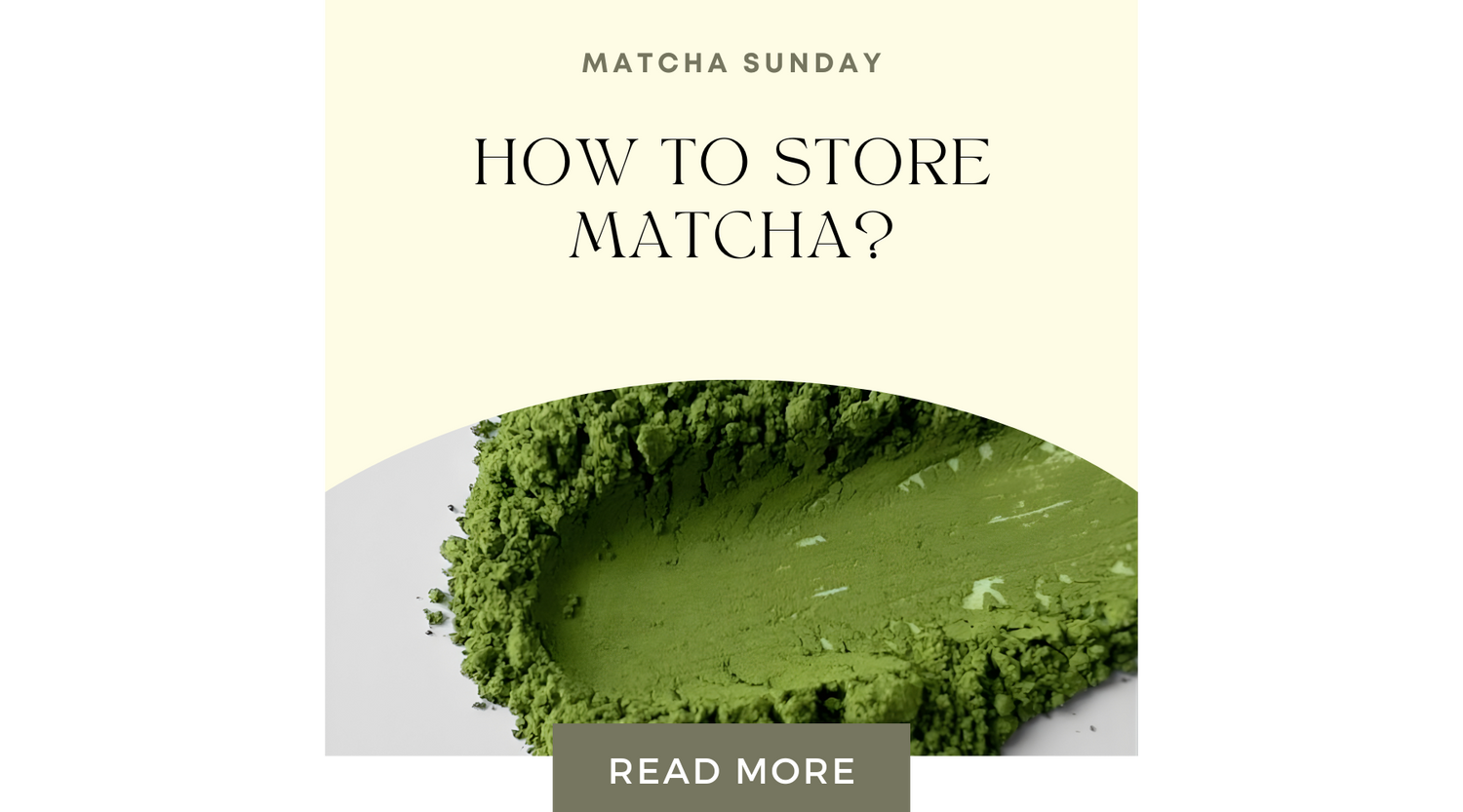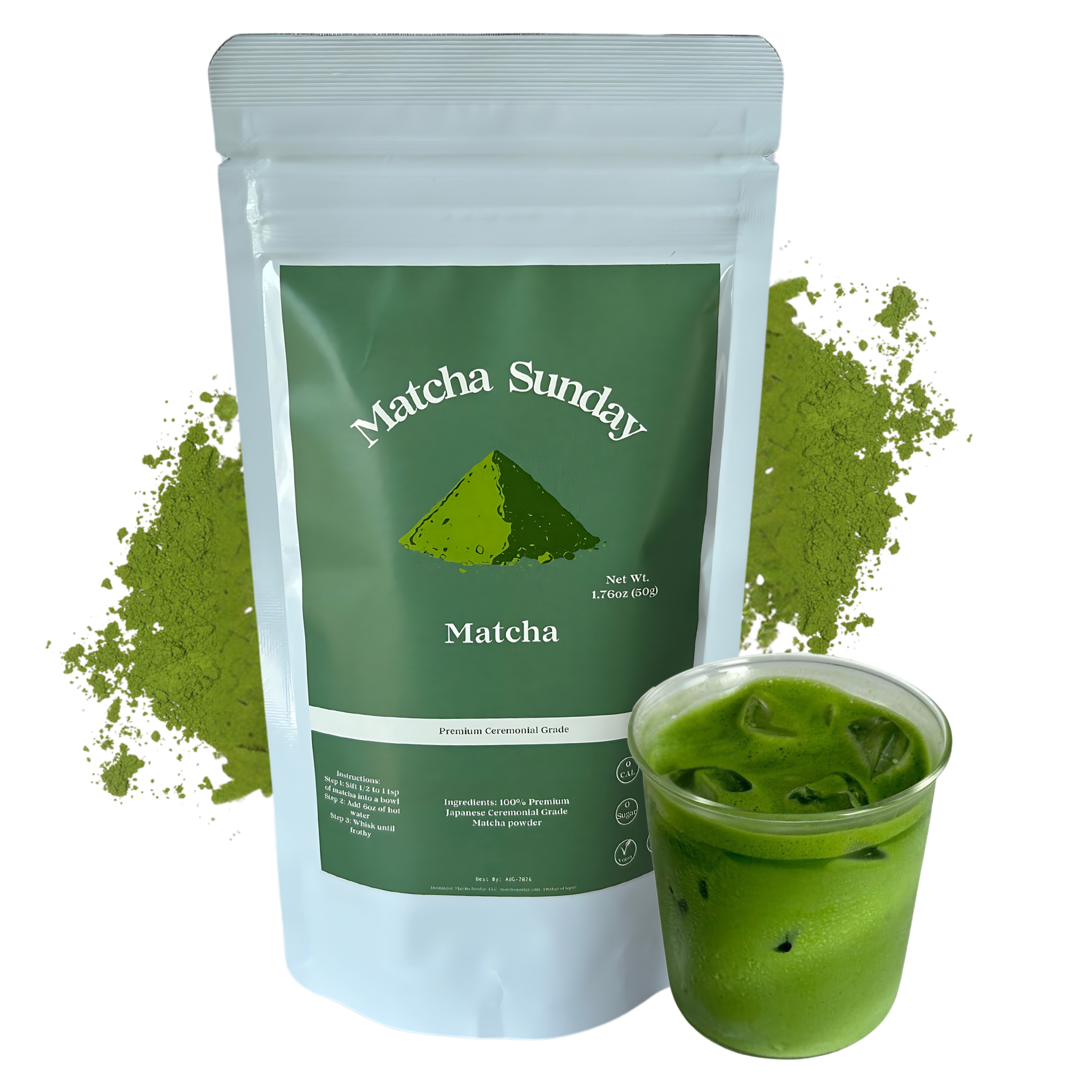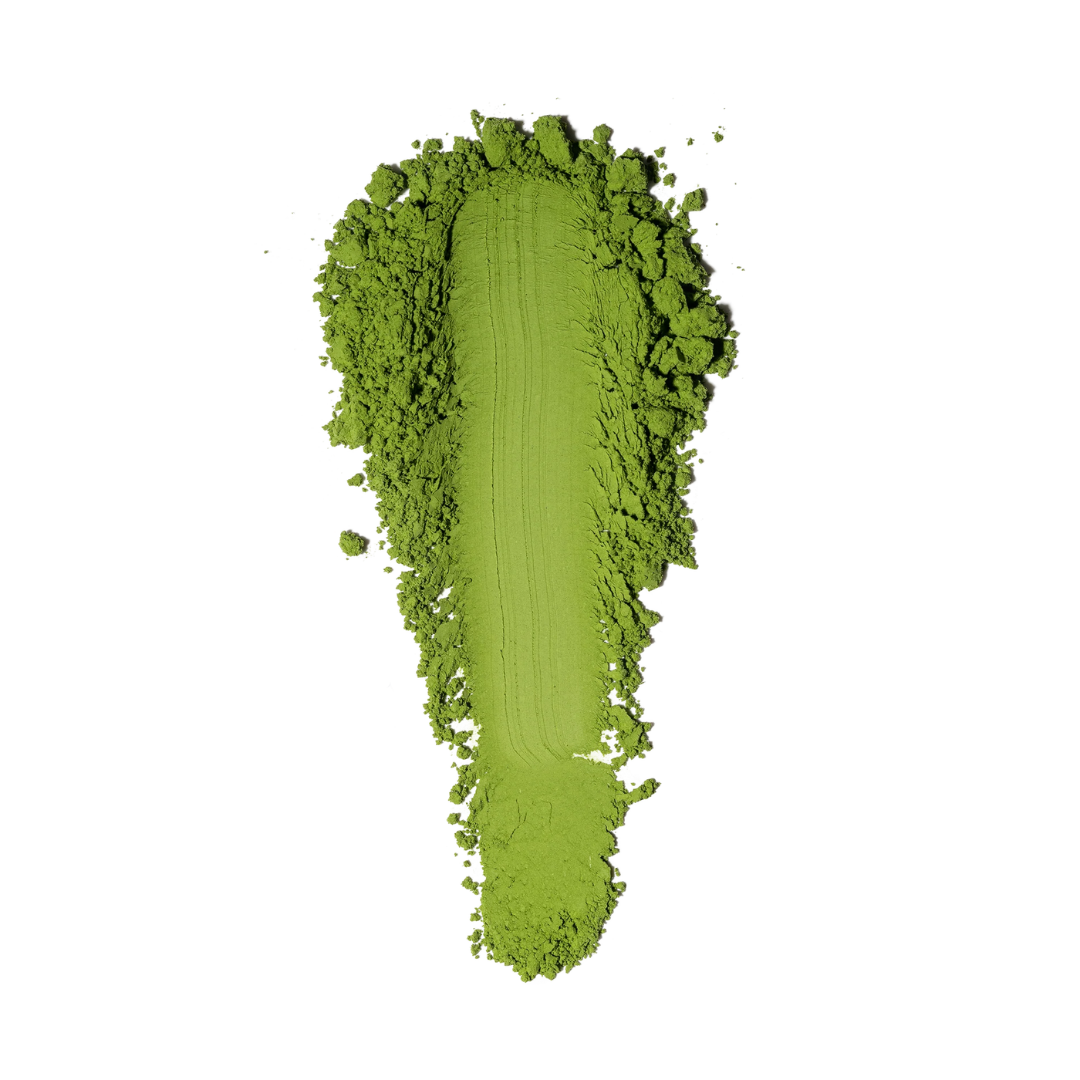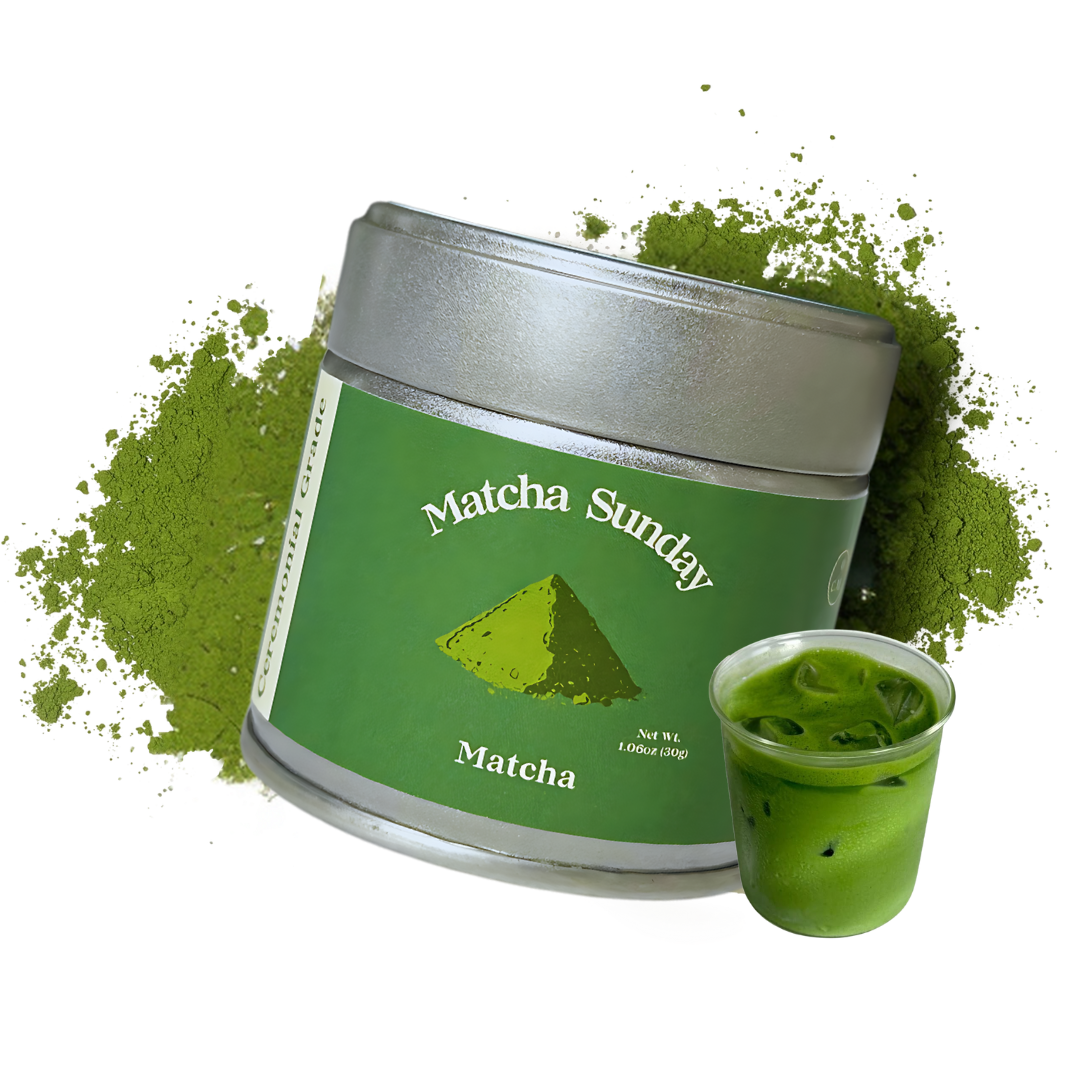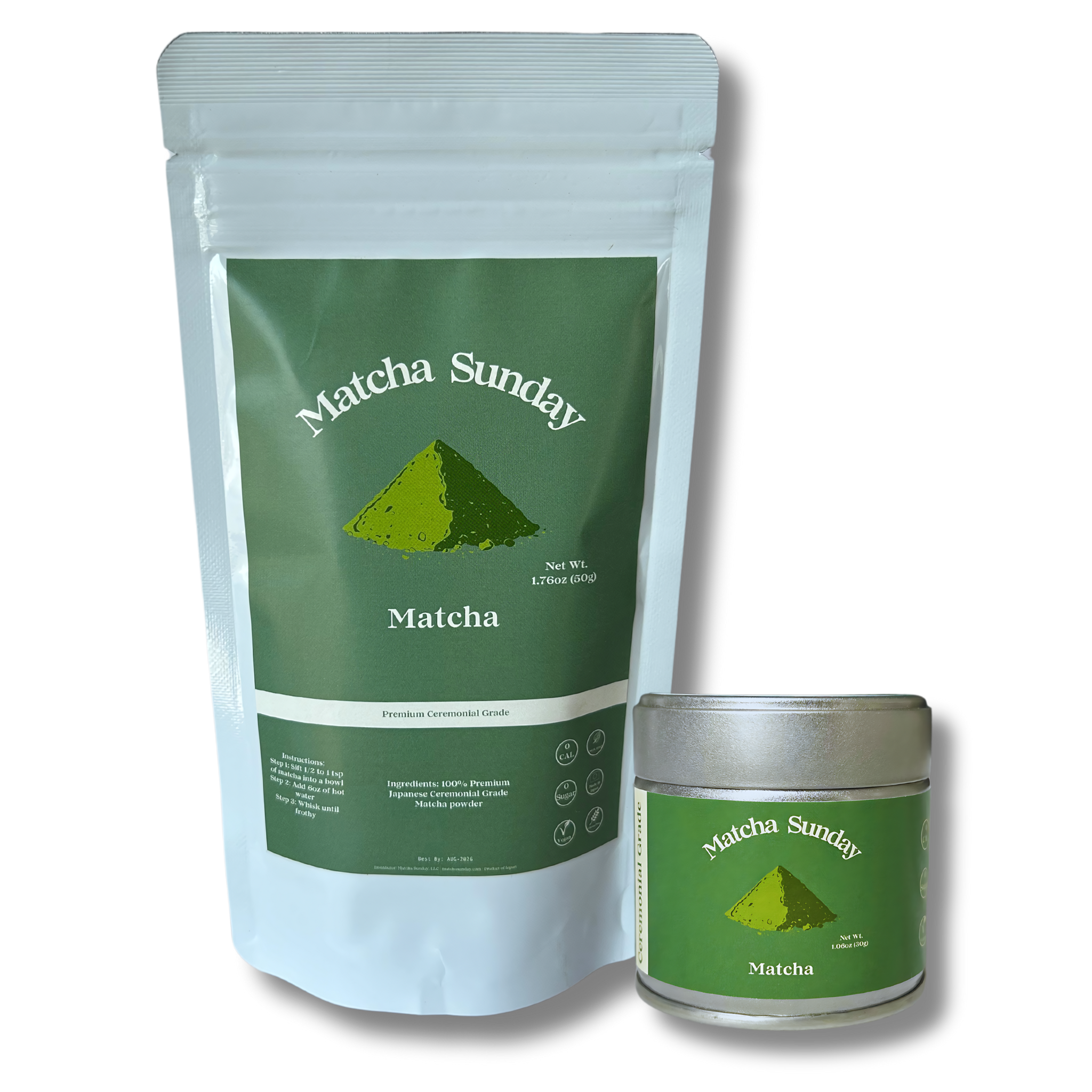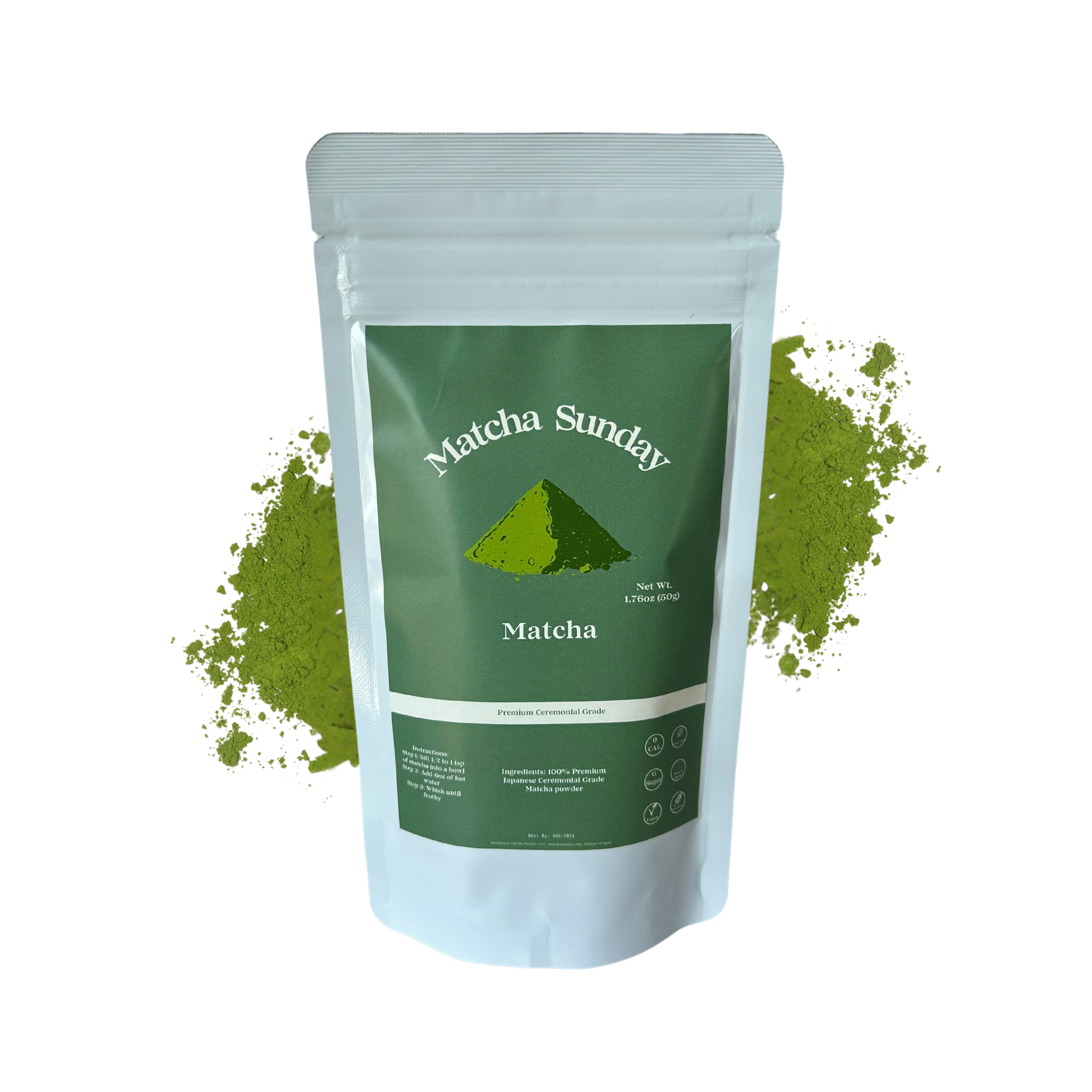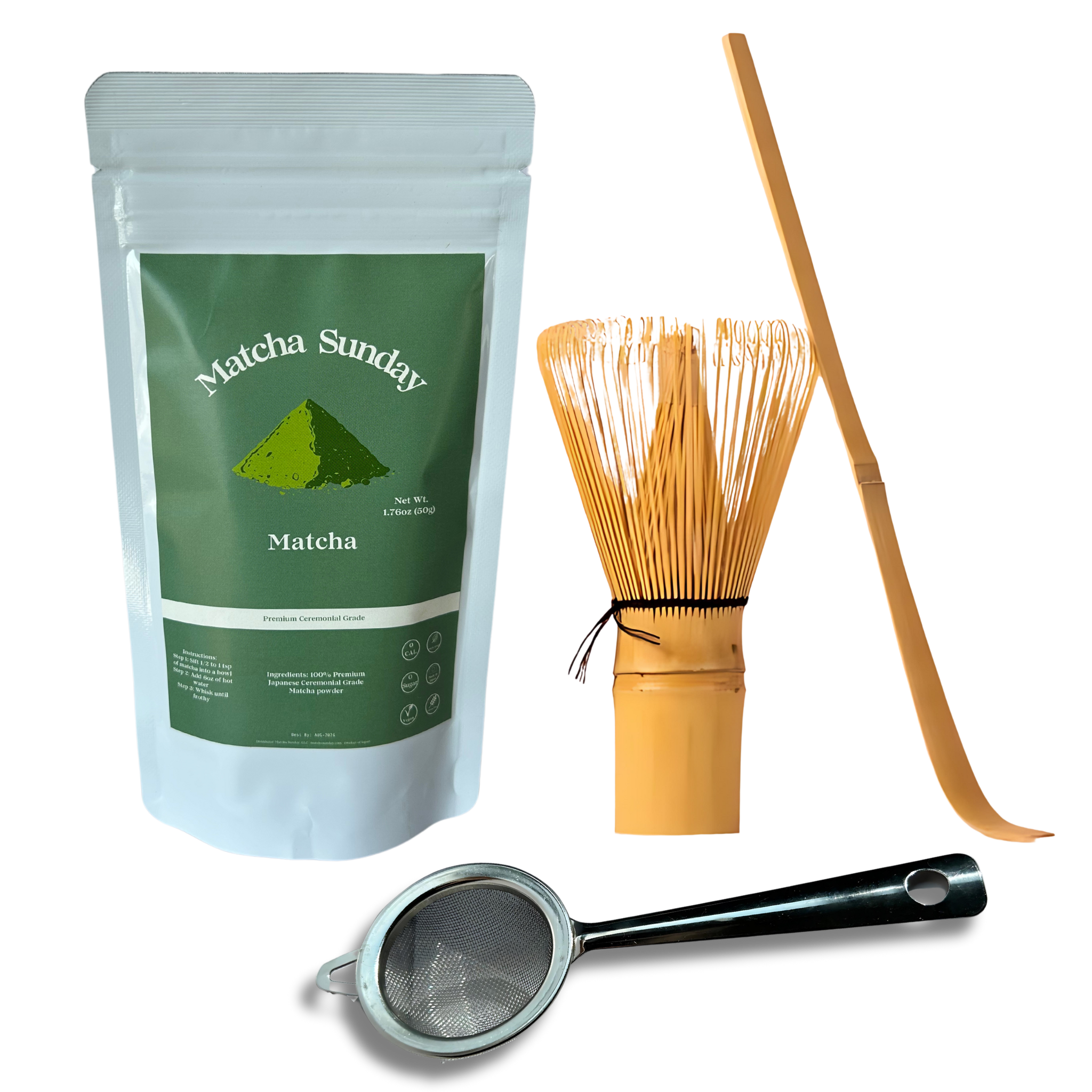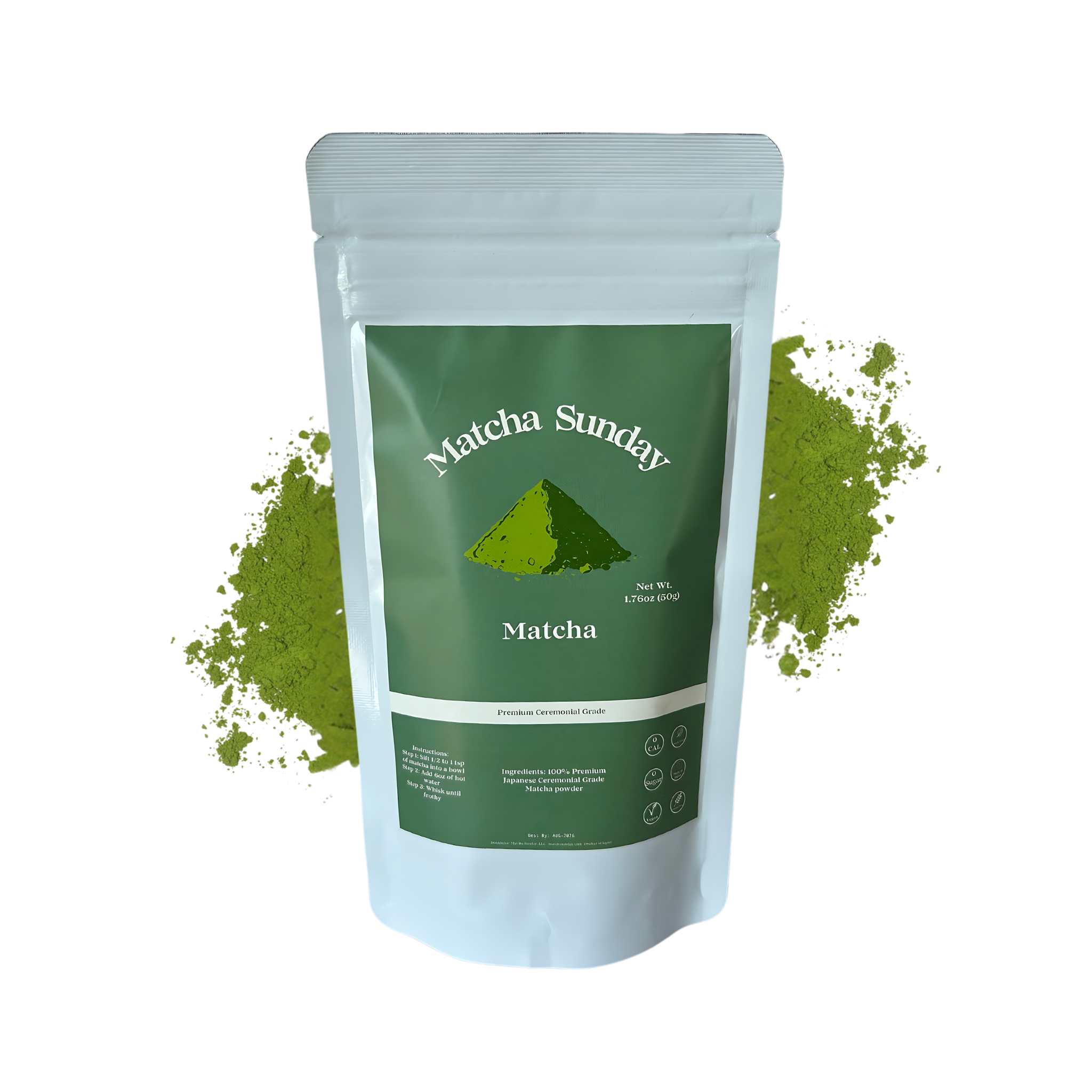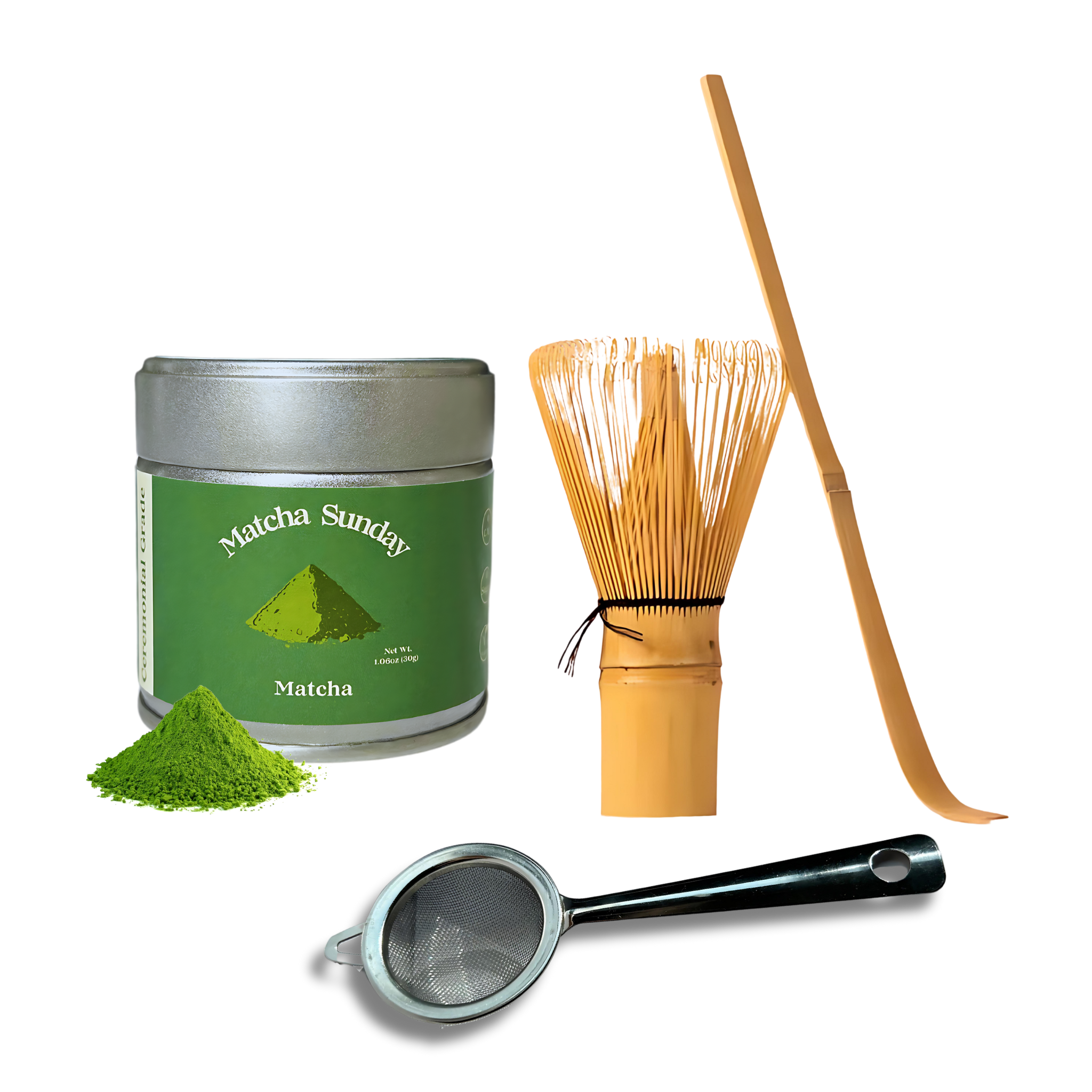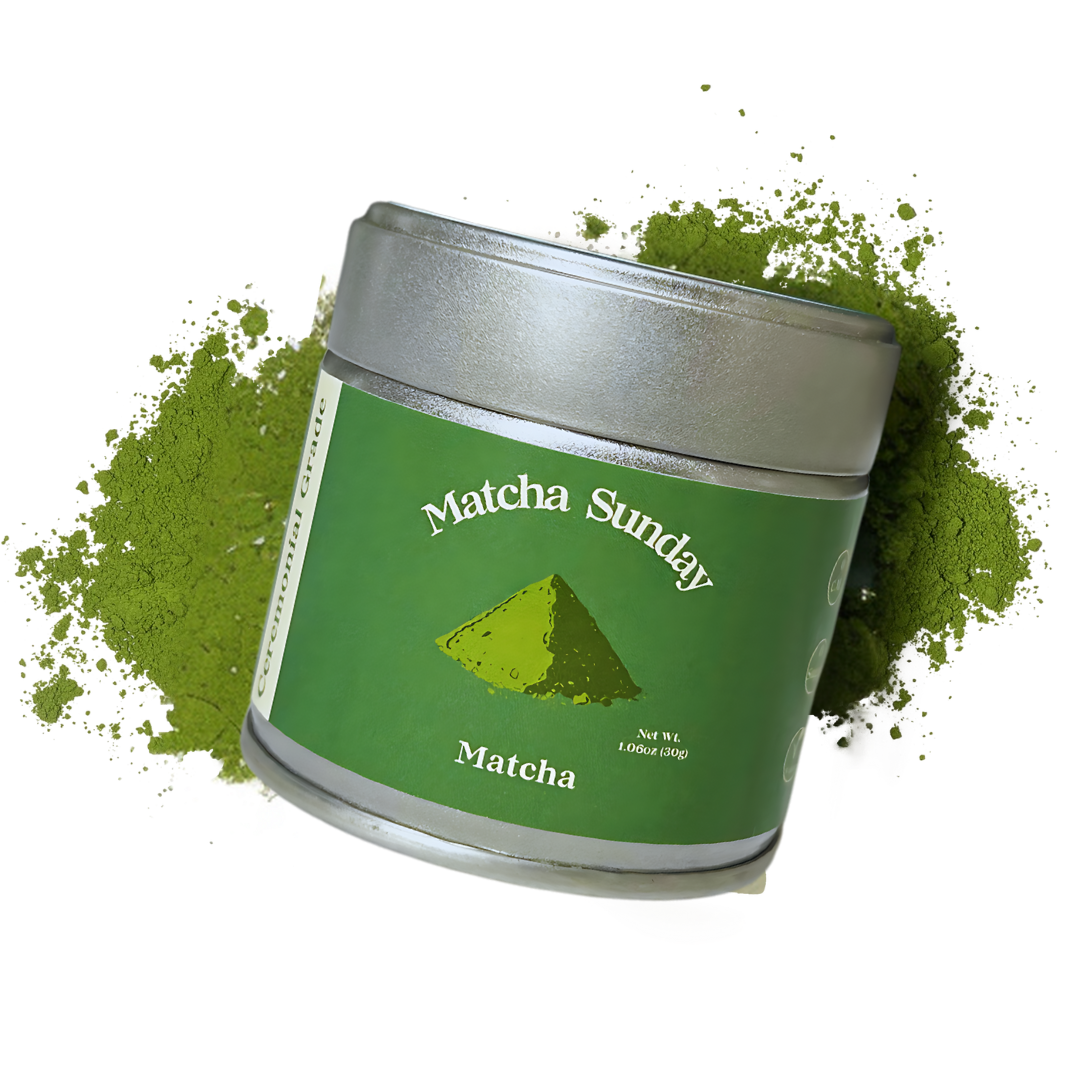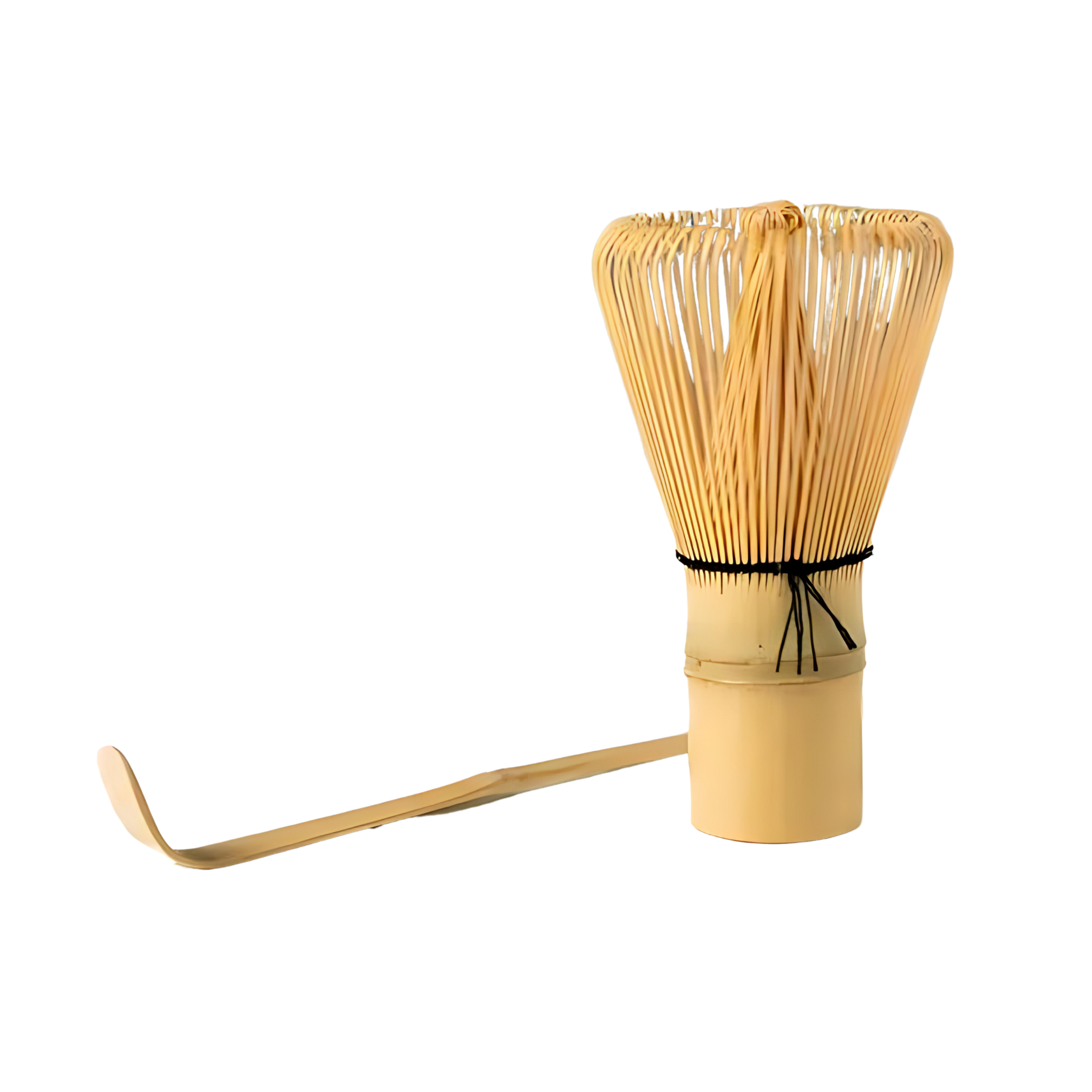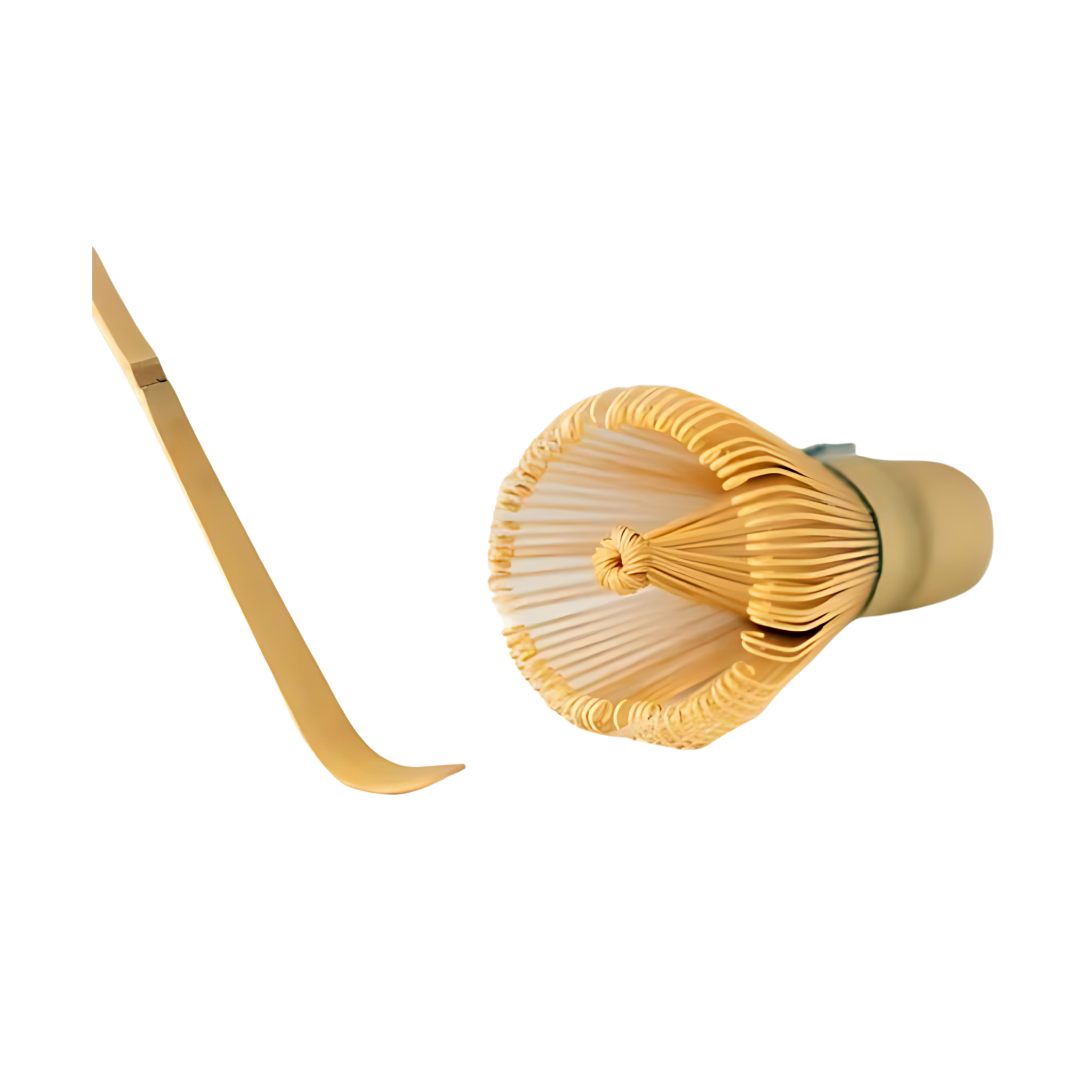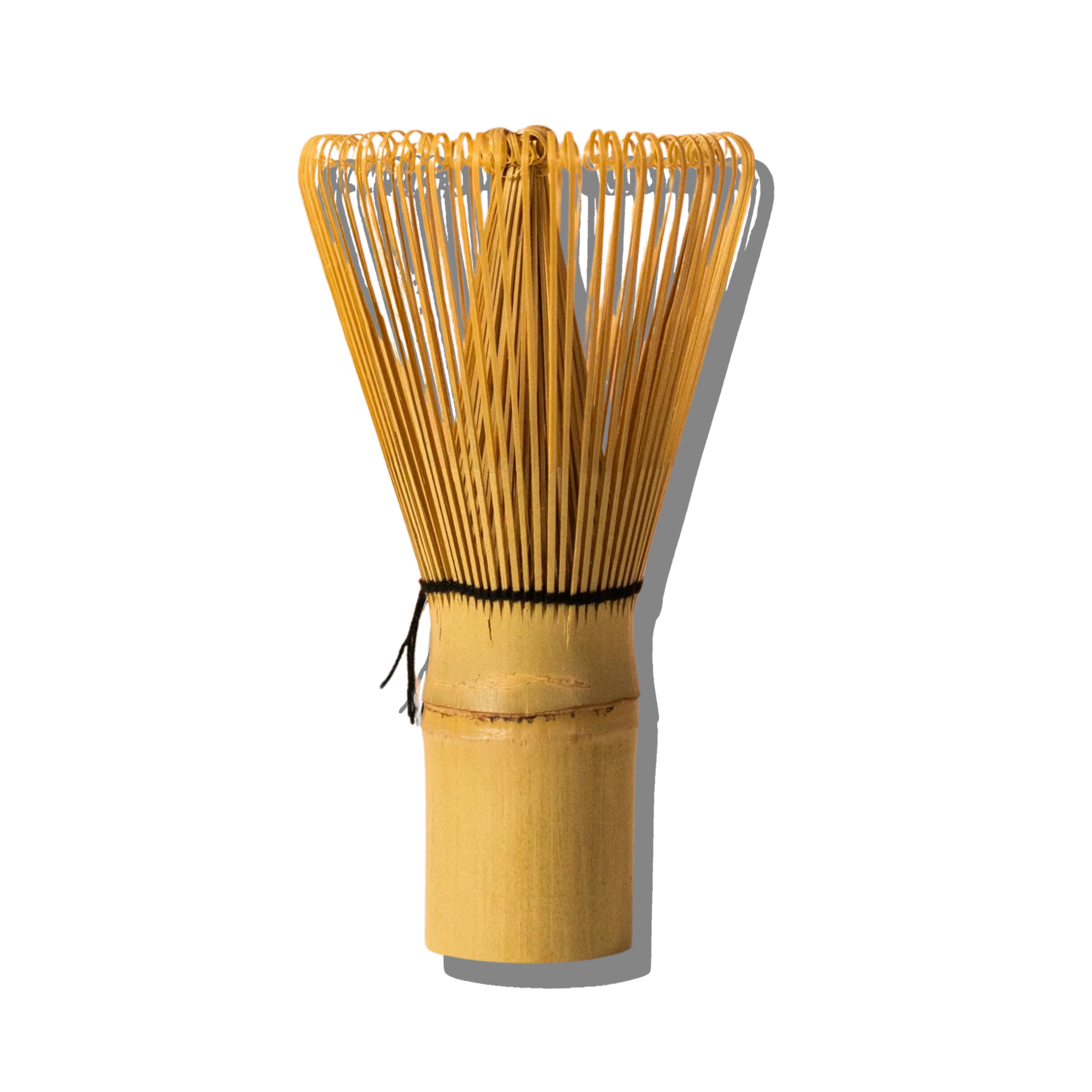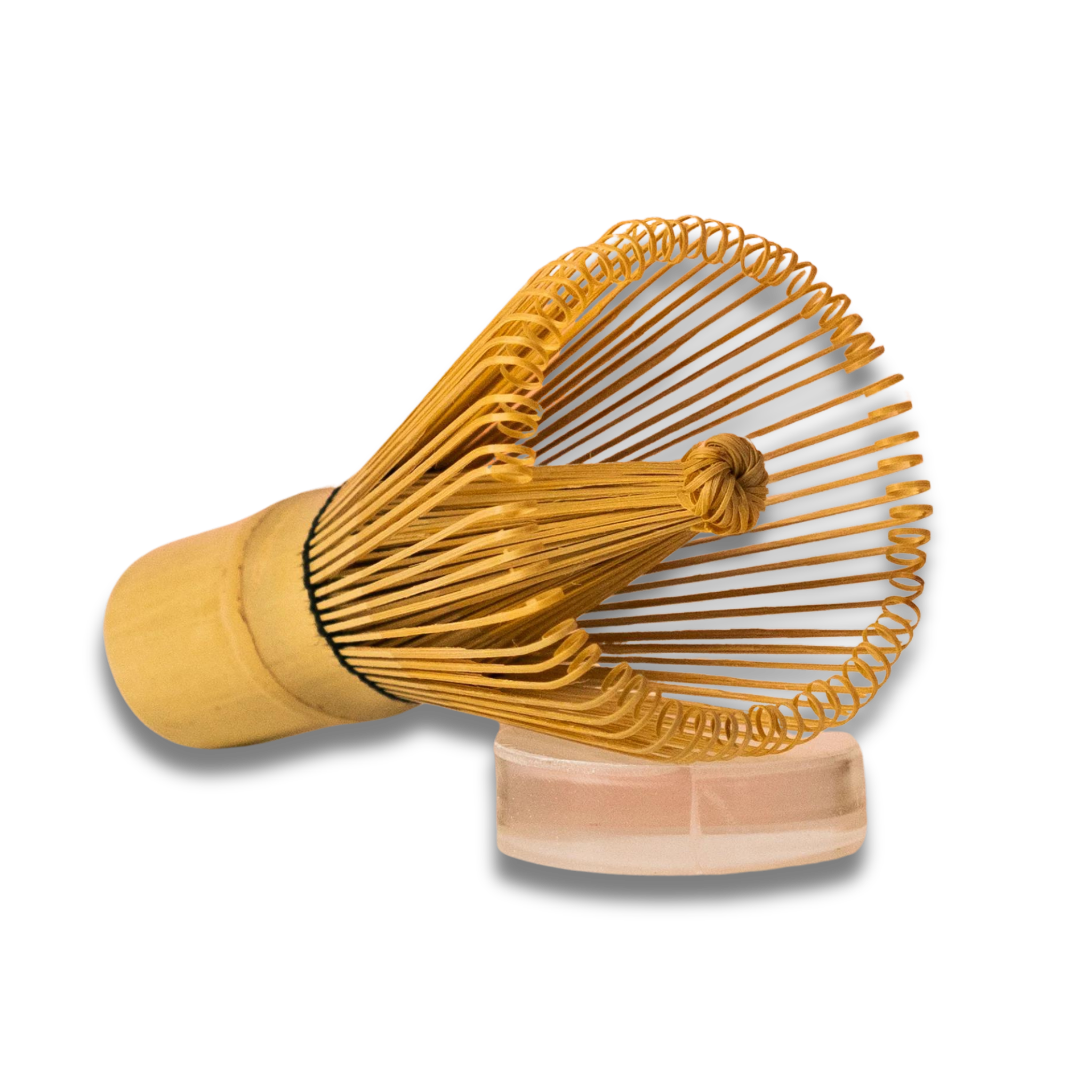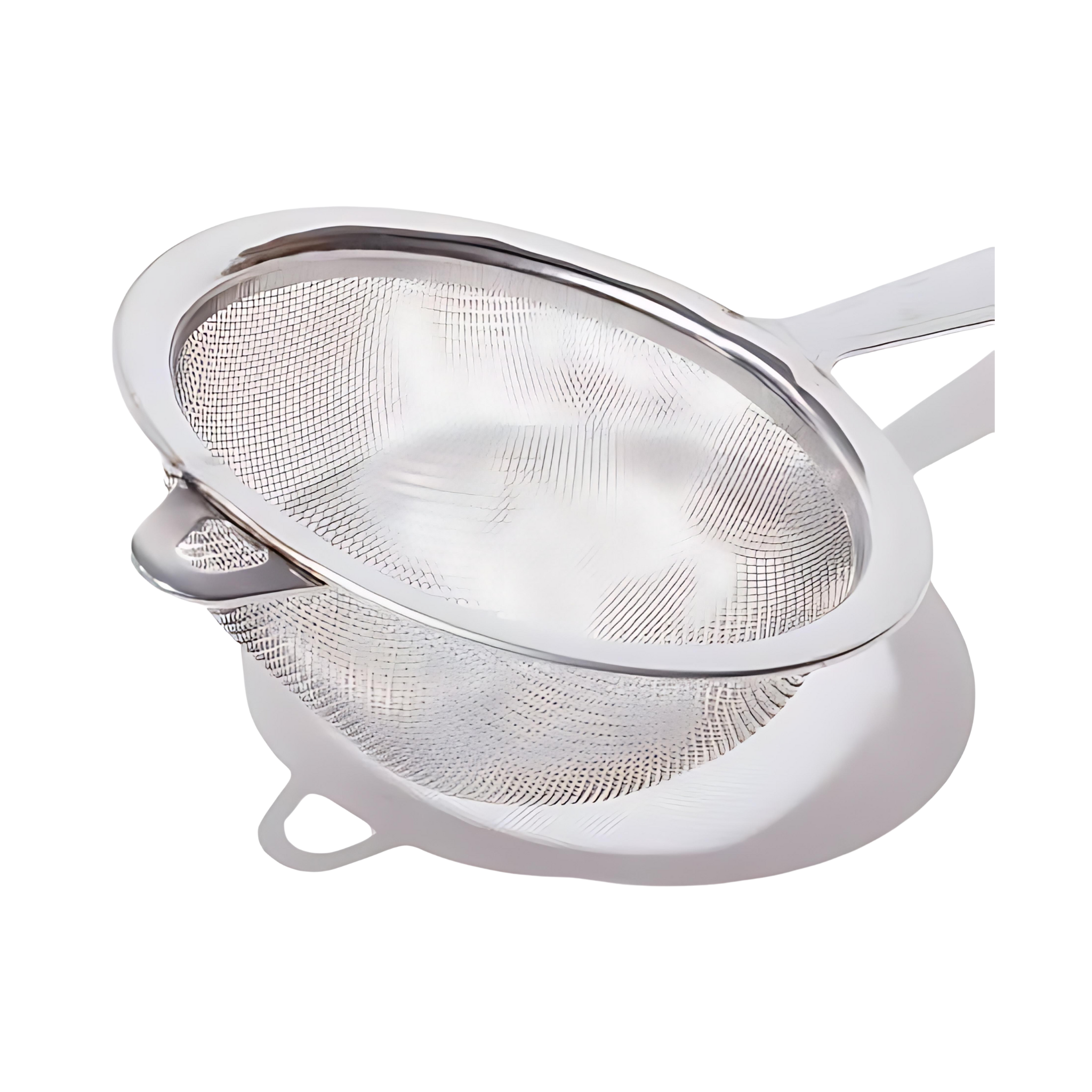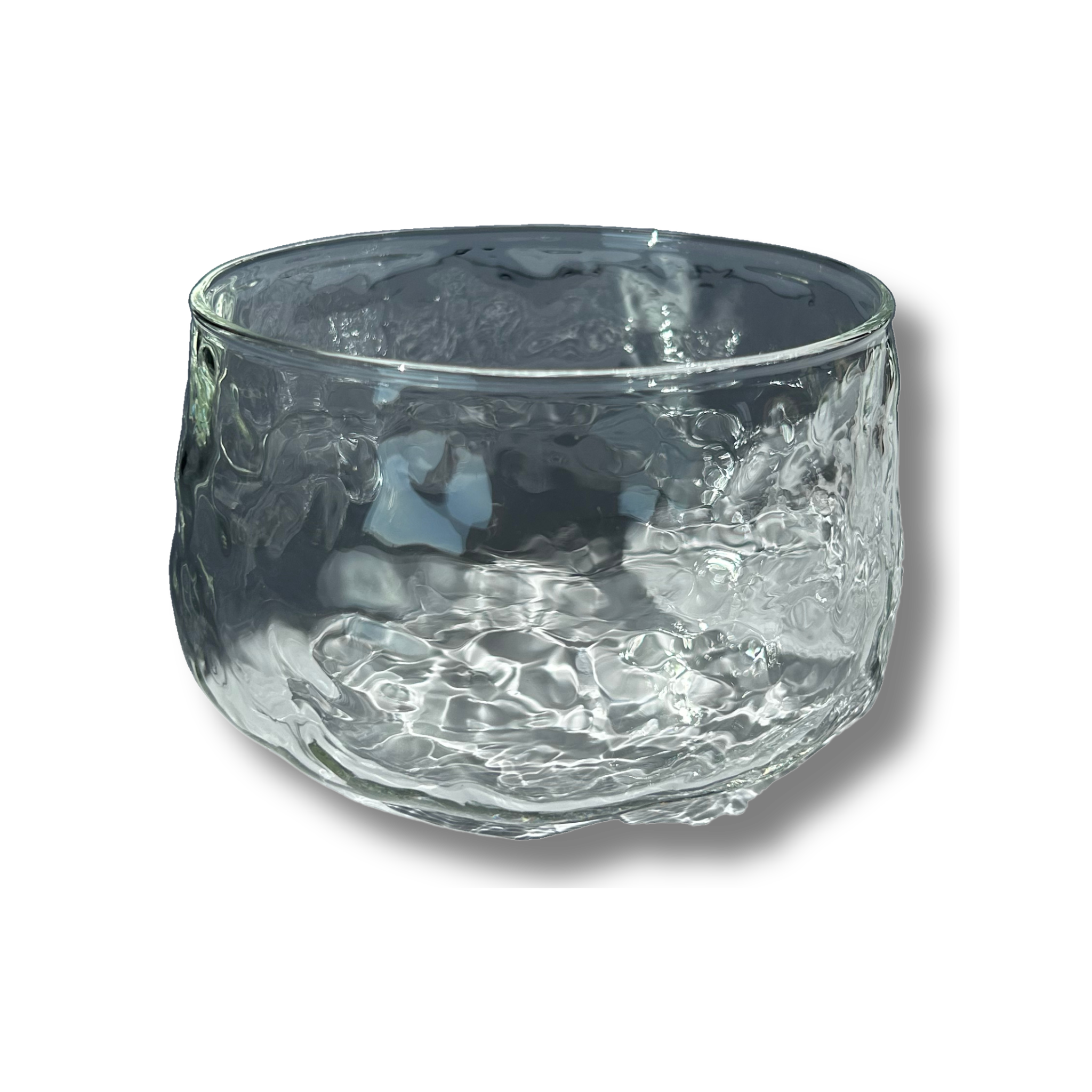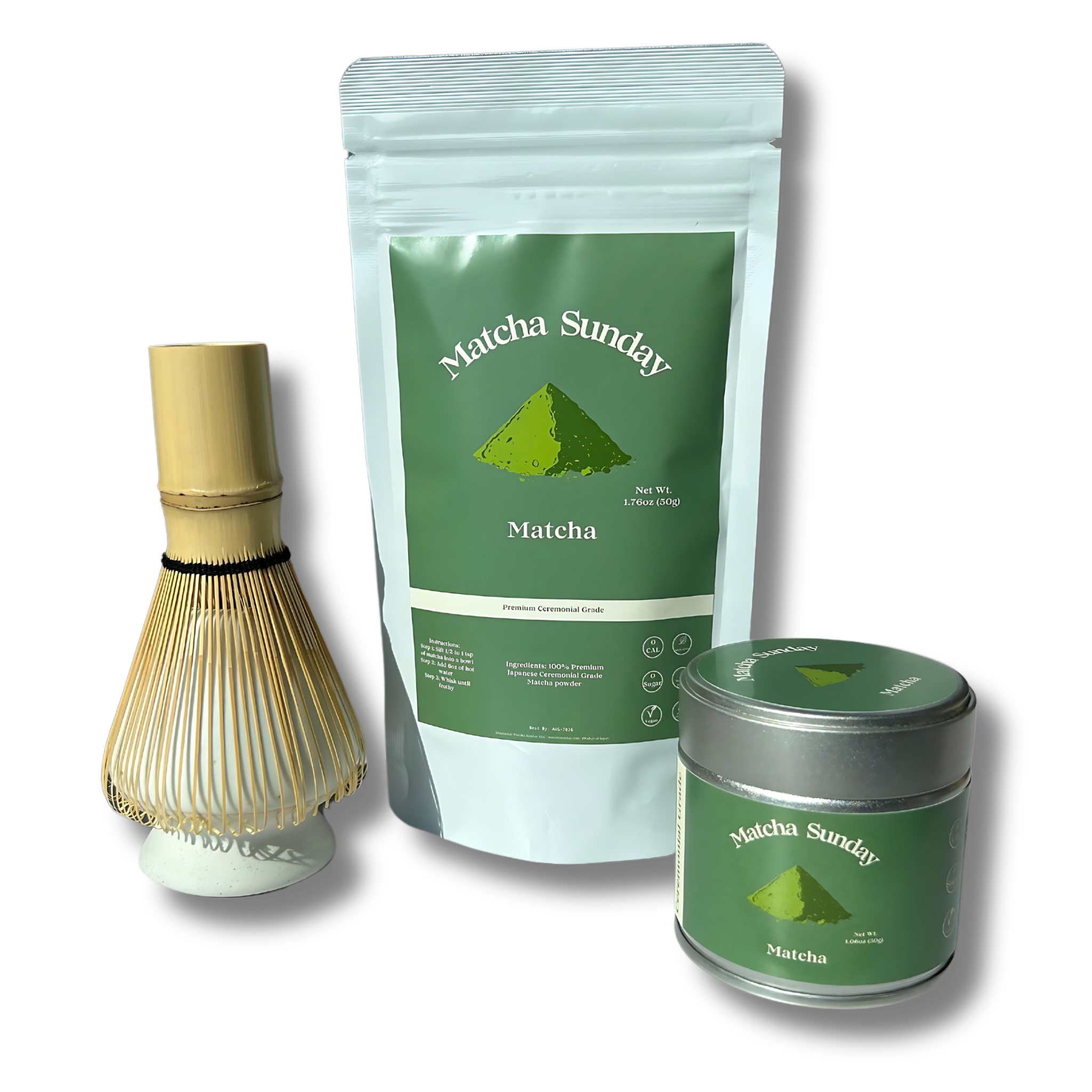The Complete Guide to Storing Matcha for Vibrant Color and Peak Potency
Your matcha’s magic begins long before the first whisk. Freshness shapes everything you taste and feel. Color, aroma, texture, and that calm, steady energy all rely on proper storage. Treat the powder well, and every morning ritual feels like a quiet, green sunrise.
Why Storage Shapes The Cup
Matcha is stone-milled tea leaves, transformed into a delicate, vibrant powder. Its large surface area exposes fragile compounds to air, light, and moisture. The result? Flavor fades, color dulls, and froth weakens if storage slips. Careful handling keeps every gram alive with umami and sweetness.
The Science Behind Freshness
Studies suggest catechins and chlorophyll are sensitive to oxygen and heat. L-theanine, the amino acid linked to calm focus, may also degrade over time. When these compounds decline, the result is less creaminess, weaker aroma, and more bitterness. Protecting them is the quiet art of storage.
Why It Matters For Wellness
Matcha’s antioxidants and L-theanine support a smoother, more balanced energy curve. But potency depends on freshness more than hype. Keep that color bright and the flavors clean, and your cup supports your day’s rhythm. This is not medical advice.
The Enemies Of Freshness
Matcha has five main foes: oxygen, light, heat, moisture, and time. Odors are a stealthy sixth, sneaking in through porous materials and loose lids. With powdered leaves, even a short exposure can shift flavor. Think of storage as a daily shield.
Quick List: What To Guard Against
• Oxygen: speeds oxidation, flattens sweetness, and fades aroma.
• Light: bleaches chlorophyll, turning vivid green into dull olive.
• Heat: accelerates chemical breakdown and stale, grassy notes.
• Moisture: causes clumping, caking, and muddy mouthfeel.
• Odors: invade easily, especially from spices, coffee, and the fridge.
• Time: every week counts once a tin is opened.
Choosing The Right Container
The container is your first line of defense. Opaque, airtight tins protect against light and oxygen. Food-safe materials matter, as matcha absorbs aromas and residues quickly. Pick a container that closes with certainty, not wishful thinking.
Right-Sized Storage For Daily Rituals
Matcha keeps best in smaller volumes. Decant into a 20–40 gram tin for daily use, and store the rest sealed. Smaller headspace reduces oxygen exposure every time you open the lid. It’s a simple design tweak with a big flavor payoff.
Why The Original Tin Helps
Many premium matchas are nitrogen-flushed and sealed for freshness. That pocket of inert gas slows oxidation until you break the seal. Once opened, the clock starts. From then on, tighter habits protect your cup.
What Materials Work Best
• Opaque metal tins with tight-fitting, double lids.
• UV-blocking glass jars, only if they stay in a dark cabinet.
• BPA-free, food-grade containers with silicone gaskets.
• Resealable foil pouches tucked inside a protective tin.
Fridge Or Pantry?
If your kitchen runs warm, cool storage can help. But the fridge brings moisture and odors, which matcha hates. The trick is a sealed, double-bagged tin and patience. Always let the container warm to room temperature before opening.
Why Temperature Changes Matter
Cold air meets warm room, and condensation forms. Those tiny water droplets pull clumps, dull color, and shorten life. Warming the sealed tin prevents this. It’s the small pause that protects the powder’s silkiness.
The Freezer Question
• Pros: Very stable temperature; slows oxidation of unopened tins.
• Cons: Moisture risk when thawing; odor transfer from frozen foods.
• Best Use: Long-term storage of unopened, nitrogen-flushed tins.
• Key Rule: Always thaw sealed to room temperature before opening.
• Avoid: Repeated freeze–thaw cycles that create condensation.
• Tip: Date and rotate tins to track freshness.
Step-By-Step: Storing An Opened Tin
Consistent moves protect texture, color, and aroma day after day. This rhythm turns storage into a calm ritual—and preserves every frothy pour.
1. Decant only 20–40 grams for daily use; keep the rest sealed.
2. Use a clean, dry chashaku or spoon—no wet tools near the tin.
3. Gently press out excess air before sealing the inner lid.
4. Add a resealable pouch layer around the tin for extra odor control.
5. Store in a cool, dark cabinet away from spices and stovetops.
6. If refrigerating, bag the tin twice; warm sealed before opening.
7. Rotate stock weekly; finish opened matcha within 30–60 days.
Why This Works
Every step reduces oxygen, light, and moisture—the trio that steals vibrancy. Less headspace means fewer chemical changes per day. Clean tools prevent clumping and off-flavors. You’ll taste the difference in crema, sweetness, and a lingering, oceanic finish.
Travel And On-The-Go Rituals
Your matcha ritual can travel lightly without sacrificing freshness. Tiny screw-top tins or stick packs keep portions tidy and protected. Avoid leaving them in a hot car or sunny bag. Treat them like chocolate—cool, dark, and briefly carried.
Quick Tips For Portable Freshness
• Pack 1–2 day portions in a mini, opaque jar.
• Keep tins in a neoprene sleeve to buffer temperature shifts.
• Choose spring water or filtered water on the road.
• Wipe tools dry; moisture creeps in fast when traveling.
• Use a shaker bottle for cold froth if you skip the whisk.
Shelf Life: How Long Does Matcha Last?
Unopened, nitrogen-flushed matcha often holds peak freshness for 6–12 months from grinding. After opening, most ceremonial grades shine for 30–60 days, depending on storage. Culinary grades can last longer for cooking, though flavors gradually flatten. The brighter the green today, the better the cup tomorrow.
How To Time Your Tins
Buy in smaller amounts if you whisk daily. Choose 20–40 gram tins and rotate thoughtfully. Mark the open date with a fine-tip marker. That tiny note improves every sip for weeks.
Signs Your Matcha Is Past Its Prime
• Color shifts from electric green to muted olive.
• Aroma softens from sweet-grassy to haylike or dusty.
• Foam collapses quickly, lacking that silky microbubble layer.
• Flavor turns thin, bitter, or astringent without umami depth.
• Clumps form easily, even with careful whisking.
• Lattes taste hollow, needing extra sweetener to balance.
What To Do With Older Matcha
Not every tin needs to be wasted. Older powders can still add gentle green notes to recipes. Think smoothies, ice creams, and matcha salt for roasted vegetables. Heat and fat soften edges that taste too sharp in a straight whisked cup.
Ideas For Culinary Repurposing
• Bake matcha shortbread or almond cookies.
• Blend into smoothies with banana, spinach, and oat milk.
• Make matcha syrup for weekend pancakes.
• Whisk into yogurt with honey and sesame seeds.
• Mix with flaky salt for an umami finishing sprinkle.
Sustainability Starts With Storage
Freshness isn’t just an indulgence—it prevents waste. Smart storage lets you buy better and use every gram. Fewer stale tins mean fewer shipments, less packaging, and more pleasure per sip. The greenest choice begins at your pantry shelf.
Low-Waste Choices
• Buy smaller tins that you can finish quickly.
• Choose resealable, lightproof packaging.
• Store away from heat sources to extend life naturally.
• Repurpose tins as spice jars or travel containers.
• Compost or recycle packaging where facilities exist.
Taste Perception And Freshness
Fresh matcha doesn’t only taste sweeter; it feels smoother on the palate. Microfoam clings to the surface, and aromas bloom with each breath. Water temperature and storage work together—both shape the aesthetic of your cup. It’s design thinking for flavor.
Water, Temperature, And The Final Sip
Warmer water exaggerates bitterness from aged powders. Slightly cooler water highlights sweetness and umami. If your matcha has aged, try 70–75°C water and shorter whisking. You’ll preserve elegance even as flavors grow softer.
Common Mistakes To Avoid
• Leaving the tin uncapped while preparing tools.
• Storing near ovens, sunny windows, or spice racks.
• Opening a cold tin before it warms to room temperature.
• Scooping with a damp spoon or whisk.
• Buying large tins you can’t finish within a month or two.
• Relying on clear jars exposed to light.
• Keeping matcha in a car or warm gym bag.
• Ignoring the open date and losing track of time.
Advanced Tips For A Peak Cup
• Split a fresh tin into two small containers to reduce air.
• Use a silicone-gasket inner lid for a tighter seal.
• Keep a simple log: open date, storage method, and tasting notes.
• Consider a small vacuum canister for decanting.
• Purge the headspace with gentle CO2 from a seltzer cartridge.
• Never add loose desiccants directly unless food-safe and secure.
Labels, Dates, And What To Look For
“Best by” dates aren’t the whole story. Grind date, harvest season, and packaging method matter. Look for nitrogen flushing, shade-grown leaves, and single-origin transparency. Trust your senses first: sight, aroma, and taste tell the truth.
How To Read Packaging Like A Pro
• Grind Date: fresher milling equals brighter color and aroma.
• Harvest Season: spring flush often gives the sweetest umami.
• Packaging: nitrogen-flushed, lightproof tins are gold.
• Grade: ceremonial for sipping; culinary for cooking and lattes.
The Ritual Of Closing Well
The final step of your ritual isn’t the last sip—it’s the lid. Smooth the powder’s surface, press the inner cap snug, and wipe the rim. That small gesture saves tomorrow’s cup. Freshness lives in these quiet, repeated moves.
Why Good Habits Hold Flavor
Repetition means consistency, and consistency preserves nuance. You’ll taste rounder sweetness, richer body, and a longer, oceanic finish. Freshness also helps the foam layer cling to the bowl. Texture and color stay luminous.
Your Questions, Answered
Should you refrigerate after opening? Only if sealed seriously, double-bagged, and warmed before opening. How fast should you finish a tin? In 30–60 days for peak flavor, depending on grade. Can you freeze? Yes—unopened tins only, thaw sealed.
Choosing Where To Store
Pick a kitchen spot you love visiting each morning. A calm, dark cabinet away from the stove is ideal. Minimal heat, minimal light, and minimal motion keep the powder relaxed. Your ritual will feel calmer too.
Why Your Tools Matter
Dry tools protect the tin from sneaky moisture. A bamboo whisk, or chasen, lasts longer when air-dried between uses. Store it upright on a whisk holder to keep tines shaped. A dry, clean kit supports a silky, stable foam.
Ritual Meets Design
Design your storage with the same attention you give your pour. Containers can be beautiful, tactile, and leakless. A tin that seals with a soft click becomes a signal to exhale. It’s luxury in the quietest form.
Small Habits, Big Flavor
The best storage is a sequence of tiny choices. Cap quickly. Keep it cool. Avoid light. Over weeks, these choices add up to color, aroma, and a texture that glides.
When To Upgrade Storage
If your tins live on a sunny counter, change the scenery. Move matcha to a cool cabinet, add a gasketed inner lid, and shorten the decant cycle. You’ll notice foam renaissance within days. The palette returns to neon spring.
Seasonality And Rotation
Spring harvests often show sweetest umami and softest bitterness. If you buy seasonally, store thoughtfully, and rotate, every week tastes like a new blossom. Treat each tin like a limited edition. Drink intentionally and finish gracefully.
A Note On Blends And Origins
Single-origin matcha offers clarity, while blends aim for balance across seasons. Storage keeps both honest. Whether you prefer oceanic depth or bright meadow notes, fresh handling respects the grower’s craft. It honors the ritual in your hands.
Troubleshooting Flat Foam
If your foam collapses fast, check three things. Storage, water temperature, and whisk technique share responsibility. A tighter seal, cooler water, and an energetic wrist can bring the velvet back. Start with storage and watch the crema return.
The Calm Of Preparedness
Pre-portion one week’s matcha into tiny tins on Sunday night. It turns weekday mornings into smooth choreography. No rush, no spills, no extra oxygen. Just color, aroma, and focus—ready.
Key Takeaways
• Oxygen, light, heat, moisture, and time are matcha’s main enemies.
• Use small, opaque, airtight containers and decant in 20–40 gram portions.
• Store cool and dark; if refrigerating, double-bag and warm sealed before opening.
• Finish opened matcha within 30–60 days for peak flavor and foam.
• Watch for color, aroma, and texture shifts to spot aging.
• Thoughtful storage reduces waste and elevates every sip.
For a calm, luminous cup, choose ceremonial-grade matcha packaged with care. Matcha Sunday selects shade-grown, freshly milled powders and lightproof tins that respect the leaf. Store them well, and let the ritual bloom each morning.

